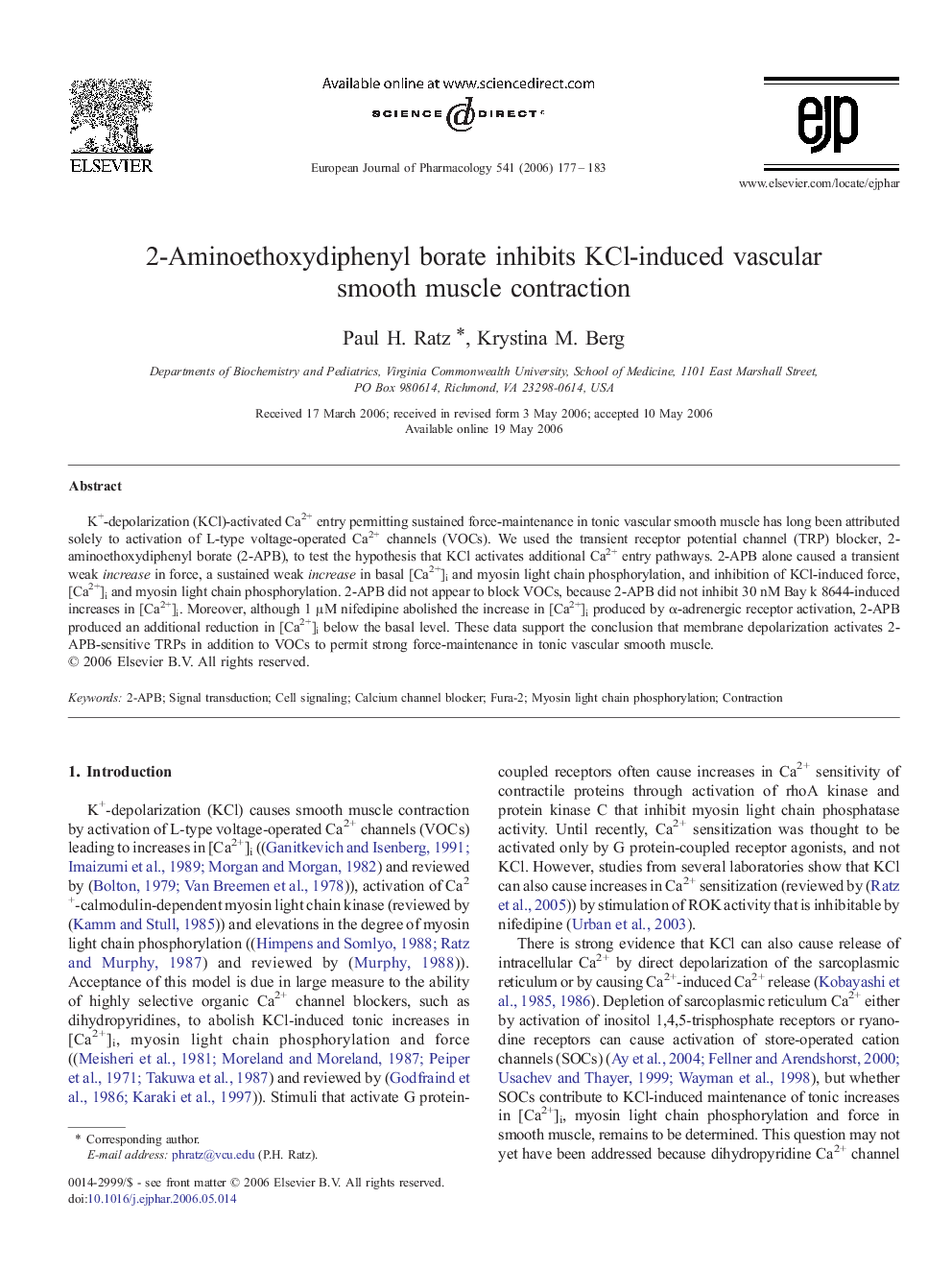| کد مقاله | کد نشریه | سال انتشار | مقاله انگلیسی | نسخه تمام متن |
|---|---|---|---|---|
| 2537016 | 1559175 | 2006 | 7 صفحه PDF | دانلود رایگان |

K+-depolarization (KCl)-activated Ca2+ entry permitting sustained force-maintenance in tonic vascular smooth muscle has long been attributed solely to activation of L-type voltage-operated Ca2+ channels (VOCs). We used the transient receptor potential channel (TRP) blocker, 2-aminoethoxydiphenyl borate (2-APB), to test the hypothesis that KCl activates additional Ca2+ entry pathways. 2-APB alone caused a transient weak increase in force, a sustained weak increase in basal [Ca2+]i and myosin light chain phosphorylation, and inhibition of KCl-induced force, [Ca2+]i and myosin light chain phosphorylation. 2-APB did not appear to block VOCs, because 2-APB did not inhibit 30 nM Bay k 8644-induced increases in [Ca2+]i. Moreover, although 1 μM nifedipine abolished the increase in [Ca2+]i produced by α-adrenergic receptor activation, 2-APB produced an additional reduction in [Ca2+]i below the basal level. These data support the conclusion that membrane depolarization activates 2-APB-sensitive TRPs in addition to VOCs to permit strong force-maintenance in tonic vascular smooth muscle.
Journal: European Journal of Pharmacology - Volume 541, Issue 3, 17 July 2006, Pages 177–183